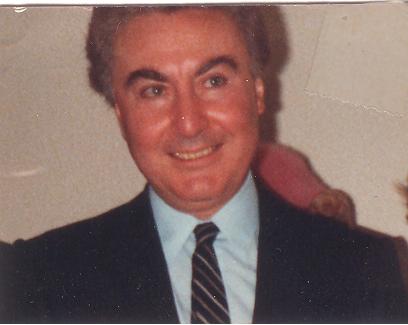“Breast cancer biopsy”
Are needle core biopsies as accurate as core samples were?
17 Answers
This is not a valid question, as a needle core biopsy and a core sample is equivalent. These are very accurate in finding cancers. However, margins, lymphovascular invasion (vessel involvement) and other findings cannot be assessed well with this technique. But, core biopsies are performed to guide the next steps in management, deciding if a lumpectomy, radiation, chemotherapy or other management options should be pursued further. The core can have prognostic markers performed on it to determine the type of post-surgery management (estrogen, progesterone and Her-2/neu).
There are many types of core biopsies. They all utilize some type of a needle/device. If properly performed to sample the suspected lesion, they are generally all adequate in accuracy.
Mammotome biopsies are accurate as long as the needle is placed in the correct area as slight deviation and remove of tissue from the wrong area could be misleading
This is not something I can give a professional answer on. It is best to speak with a breast specialist. Sorry that I was not able to help.
Core needle biopsy(CNB) is done to obtain an adequate sample. During CNB, your doctor uses a wide, hollow needle to take out pieces of breast tissue from a suspicious area the doctor has felt or has pinpointed on an imaging test. The needle may be attached to a spring-loaded tool that moves the needle in and out of the tissue quickly.A small cylinder (core) of tissue is taken out in the needle. Several cores are often removed.
To answer your question precisely, core samples of mass or tumor are obtained using a core needle (hollow needle) for diagnosis.
Hope this helps! Take care!
To answer your question precisely, core samples of mass or tumor are obtained using a core needle (hollow needle) for diagnosis.
Hope this helps! Take care!
Thank you again for your question.In essense, the biopsy modality will be determined by the disease condition to be examined. A fine biopsy is more applied to fluid disease tissues either noted by direct manual or digital palpation, and a fine thin needle is directed into the disease location to "aspirate" the cellular component for further analysis to rule out potential malignancy. So it is more accurate for "fluid" disease tissues. As compared to core biopsy, this is utilized for more solid or semi-solid disease tissue ascertained by digital or manual palpation or via radiologic study such as Ultrasound, CT can or MRI. In this modality, solid tissue sample of the disease organ is excised and sent to pathology for more detailed study to establish the disease extent of whether malignant or otherwise. Hence with this background commentary, fine needle biopsy is equally as accurate as the core depending on the disease organ tissue in question.
Please fill free to contact me at pineridgeobgyn.com
Dr. I. Brown
Please fill free to contact me at pineridgeobgyn.com
Dr. I. Brown
For breast biopsies, the radiologist may often choose to do a core needle biopsy or a fine needle aspiration. The type of biopsy the radiologist chooses depends on several factors, such as if the type of imagining required to see the abnormality or if it is palpable. While more tissue would be obtained with a core needle biopsy, it is more invasive than a fine needle aspiration. I would recommend you discuss why a particular breast biopsy is recommended by the radiologist performing the procedure.
A needle core biopsy results in a core sample which is examined for cancer cells. This is typically used for solid mass sampling versus fine needle aspiration of primarily cystic or fluid filled masses. Yes, it is accurate and widely used in early testing of breast masses.
Jeff Sims
Pathologist
I must presume you are asking about needle core biopsy, a relatively thin sample, versus a stereotactic vacuum assisted biopsy, which is a larger caliber biopsy. The actual answer to your question is that it doesn't matter which is used, as long as the lesion or mass is actually biopsied. If it is, then either one can provide a diagnosis. However, there is a chance for either method to miss the lesion, and then a diagnosis cannot be made. Obviously, the larger biopsy sample increases the odds of hitting the lesion. Coupling either biopsy method with ultrasound or radiographic imaging increases the odds of obtaining a diagnostic biopsy sample.
The recommended initial biopsy of choice for a breast mass or any abnormality seen on a mammogram is a core needle biopsy or fine needle aspiration, in the case of a cyst. This is because this has fewer risks. The results of this biopsy will then determine if further surgery is needed.

Pathmanathan Rajadurai
Pathologist
By needle core, I suppose you mean fine needle aspiration biopsies (FNAC). Under the best of circumstances, for breast cancer diagnosis, the concordance for FNAC and core biopsies is very good.
Please check following website
https://www.cancer.org/cancer/breast-cancer/screening-tests-and-early-detection/breast-biopsy.html
https://www.cancer.org/cancer/breast-cancer/screening-tests-and-early-detection/breast-biopsy.html

Farid S. Zaer
Preventative Medicine Specialist | Preventive Medicine/Occupational Environmental Medicine
Redcliffe, Queensland
What you are talking about are 2 different methodologies.
In the 'needle core biopsies" generally, a large bore needle is used and the operator, mostly a pathologist (medically trained) will feel the lump or lesion, hold it between his fingers and push the needle through the numb skin several times to get pieces of tissues and cells and then spread them out on a slide, or create "cell blocks" that re-capitulates the original tissues, this is a CYTOLOGICAL technique.
In the "tissue core biopsies", a special designed large bore cutting needle is used to get to deeper lumps not felt by the hand, but rather seen on ultrasound,and using a device that locates it, the trucut needle goes in and cuts out a piece of the tissue in the form of a cylinder (resembling the bore of the large needle), these are actual tissue samples and not cells, fragments or fine particulate matter from the lump. The tissue is processed as such and read as biopsies as done in HISTOLOGY as compared to the previous methodology called cytology.
The second METHOD of core biopsy is much more accurate, as it provides the tissue and the entire configuration of the lesion (cancer, adenoma, etc) within the tissue matrix. One can check online resources to see papers published on this topic.
In the 'needle core biopsies" generally, a large bore needle is used and the operator, mostly a pathologist (medically trained) will feel the lump or lesion, hold it between his fingers and push the needle through the numb skin several times to get pieces of tissues and cells and then spread them out on a slide, or create "cell blocks" that re-capitulates the original tissues, this is a CYTOLOGICAL technique.
In the "tissue core biopsies", a special designed large bore cutting needle is used to get to deeper lumps not felt by the hand, but rather seen on ultrasound,and using a device that locates it, the trucut needle goes in and cuts out a piece of the tissue in the form of a cylinder (resembling the bore of the large needle), these are actual tissue samples and not cells, fragments or fine particulate matter from the lump. The tissue is processed as such and read as biopsies as done in HISTOLOGY as compared to the previous methodology called cytology.
The second METHOD of core biopsy is much more accurate, as it provides the tissue and the entire configuration of the lesion (cancer, adenoma, etc) within the tissue matrix. One can check online resources to see papers published on this topic.















